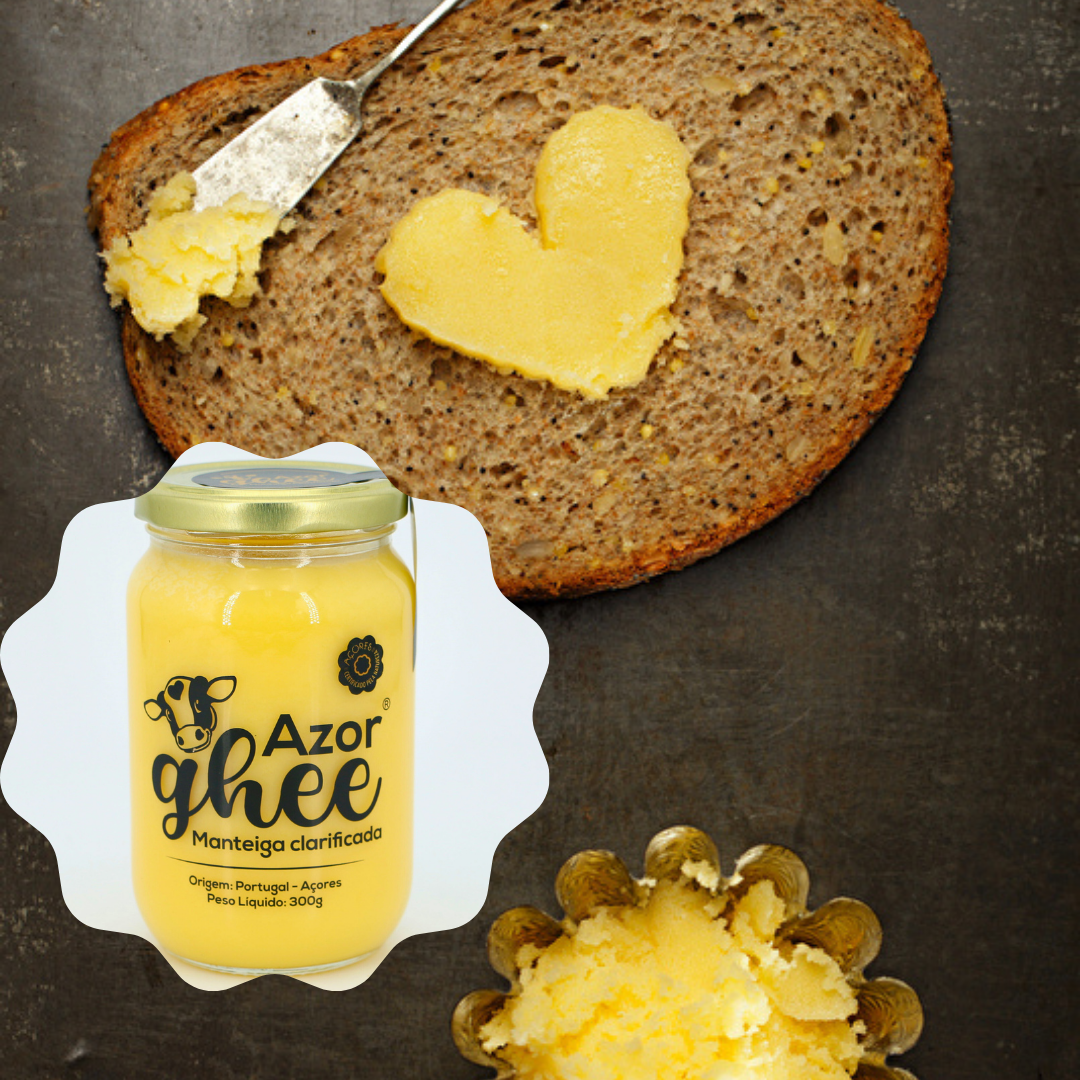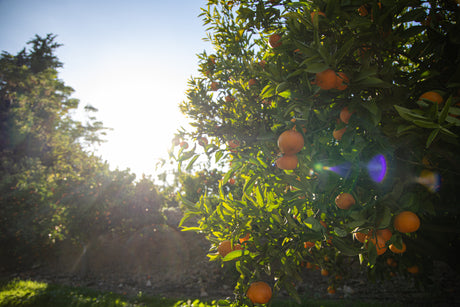Ghee – The Gold of the Kitchen
Ghee is much more than just clarified butter – it's a versatile, aromatic fat with a long history of use. It has a particularly strong place in Indian and Ayurvedic cuisine, but it's also becoming increasingly popular in the Western world. But what makes ghee so special, and why do many chefs and gourmets swear by this golden elixir?
What is ghee and how is it made?
Ghee is produced by gently heating butter until the water evaporates and the milk solids are removed. What remains is pure butterfat with a golden color, intense aroma, and slightly nutty flavor. Depending on the method, the production process can take several hours to achieve the perfect consistency and flavor.
Why is ghee so popular?

1. High heat resistance
Unlike regular butter, ghee has a very high smoke point of around 250°C. This means it's ideal for frying, deep-frying, and searing without burning or producing unwanted substances.
2. Long shelf life
Because ghee no longer contains any milk components, it has a particularly long shelf life – even without refrigeration. In an airtight container, it stays fresh for weeks or even months without going rancid.
3. Versatile use
Whether for sautéing vegetables, as a base for sauces, or as a flavorful addition to sweet and savory dishes, ghee adds a special depth and delicate buttery notes to dishes. It can even be used as a spread or in hot drinks like "Bulletproof Coffee."
4. Pure & free from additives
Ghee is a pure natural product—free from artificial additives or preservatives. Particularly high-quality ghee is traditionally produced and comes from sustainable pasture-raised livestock.
Cultural significance & origin
Ghee originated in India, where it has been an integral part of the diet for thousands of years. It is used not only in cooking but also has spiritual significance. In Hindu ceremonies, for example, it is used as an offering in the fire (Yajna).
Difference between Ghee & Butter
Although ghee is made from butter, the two differ in several ways:
- Storage: Ghee can be stored without refrigeration, but butter cannot.
- Tolerance: Since ghee does not contain lactose or casein, it is often better tolerated than butter.
- Taste: Ghee has a more intense, slightly nutty flavor.
Ghee in Ayurvedic medicine
In Ayurveda, ghee is considered a valuable food that can promote inner balance. It is used as a carrier for herbs and spices because it can help improve the absorption of fat-soluble nutrients.
Different types of ghee
Not all ghee is the same! The taste can vary depending on the origin, the cows' feed, and the production process.
- Organic ghee : Comes from organically pastured cows.
- Traditionally made ghee : Cooked slowly to intensify the flavor.
- Ghee made from different types of milk : In some countries, ghee is also made from goat or buffalo milk.
AzorGhee – Ghee from the Azores
A special ghee comes from the Azores, an archipelago in the Atlantic known for its lush nature and first-class pasture farming. Azor Ghee is made from butter from cows that graze on green meadows year-round. This gives the ghee a special quality and a unique flavor with subtle caramel and almond notes.
Ghee as a secret ingredient in the kitchen
Ghee isn't just suitable for frying or baking—it can also be used as a versatile flavor enhancer in numerous dishes. Its intense aroma and creamy texture make it a secret ingredient for creative recipes.
1. Perfect for savory dishes
- Roasted vegetables with ghee – Carrots, potatoes or sweet potatoes tossed in ghee and baked in the oven get a particularly crispy crust and a fine buttery aroma.
- Curries and stews – In Indian cuisine, ghee is often used as a base for curries. It enhances the flavor of the spices and provides a particularly creamy consistency.
- Steaks & meat dishes – Ghee is ideal for searing meat as it can withstand high temperatures and produces a golden brown crust.
- Rice & Quinoa – A spoonful of ghee mixed into freshly cooked rice or quinoa makes the dish more aromatic and adds a slightly buttery note.
2. Sweet treats with ghee
- Pancakes & Waffles – Replace butter or oil with ghee for extra crispy waffles or fluffy pancakes.
- Golden Milk – A traditional drink made from warm milk, turmeric and ghee – perfect for a relaxing evening.
- Ghee biscuits & pastries – Especially in oriental and Indian cuisine, ghee is used in sweet pastries to achieve a crumbly consistency and delicate flavor.
3. Ghee as a flavor booster
- Popcorn with Ghee – Instead of butter or oil, you can use ghee to make your popcorn extra aromatic and crispy.
- Ghee coffee ("Bulletproof Coffee") – A special type of coffee in which a spoonful of ghee provides a creamy texture. Perfect for an energizing start to the day!
- Salad dressings & dips – A touch of melted ghee in dressings or dips adds a delicate, buttery note.
Conclusion: A must for every kitchen
Ghee is not only a delicious addition to food, but also a practical alternative to conventional cooking fats. Its versatility, long shelf life, and high-quality properties make it an indispensable ingredient in any kitchen. Those who value quality shouldn't miss out on sustainably produced ghee like AzorGhee !
Image source: Panthermedia. Licensed by Panthermedia.



